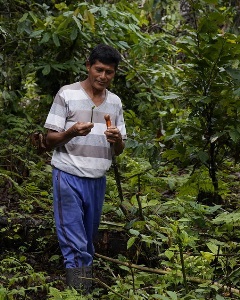Agroforestry

Agroforestry is founded on long-standing practices of integrating trees with crop and animal farming systems, encompassing a great diversity of land management systems practiced globally. Today, agroforestry is gaining renewed importance for its potential to transform agrifood systems to become more adaptive and resilient.
As multifunctional practices, agroforestry systems can improve livelihood resilience and food security for farmers, provide important ecosystem services, such as improved soil health and water management, and contribute to climate change mitigation and adaptation.
In Focus
 | Case study: The Amazonian Chakra, Ecuador The Amazonian Chakra is a traditional agroforestry system managed by Indigenous communities in Napo province, Ecuador. In January 2023, it was officially recognized as a Globally Important Agricultural Heritage System (GIAHS) by FAO. |
FAO aims to support sustainable transitions to agroforestry that meet the needs of farmers while contributing to the Sustainable Development Goals (SDGs) and broader objectives. By providing technical and policy support, developing knowledge products and guidance FAO is leading the scaling-up of agroforestry.
FAO believes that when inclusively designed and actively managed, agroforestry can contribute to better production, better nutrition, better environment and better lives for people.
Key facts
- Agroforestry is estimated to be found on more than 43% of all agricultural land globally, where 30% of rural populations live. This represents more than 900 million people.
- One billion hectares of degraded agricultural land would benefit from the strategic establishment of trees.
- Agroforestry systems can reach 50 to 80% of the biodiversity of natural forests.
Related sites
- FAO Forestry
- Sustainable Forest Management (SFM) Toolbox: Agroforestry Module
- Global Farmer Field School Platform
- Agroecology Knowledge Hub
- Forest and Landscape Restoration Mechanism
- Dryland Forestry
- Forest and Farm Facility
